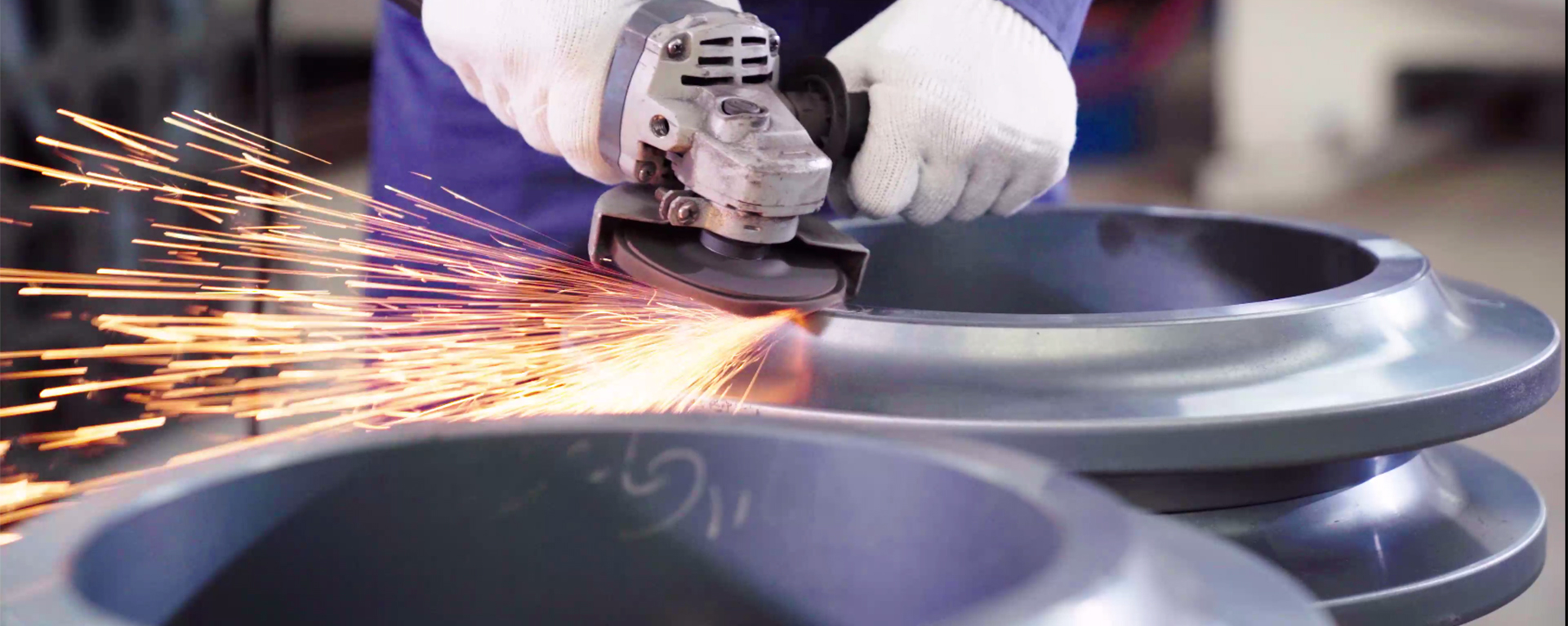On February 22, with the approval of the State Council, the city's rail transit construction plan was officially approved by the National Development and Reform Commission, marking that the country has agreed to implement the rail transit project. The city's construction planning rail transit project was reported to the National Development and Reform Commission to the State Council for approval, only 13 months, the fastest in the 35 cities approved in the country.
Yesterday morning, the municipal government held a press conference on the construction of Xuzhou rapid rail transit in the new city conference center. By 2020, the city plans to build the first phase of rail transit lines 1, 2 and 3, and strive to start construction No. 1 before the end of this year. The first phase of the line will start the test section in April this year.
The test section is located at the eastern end of Phase I of Phase 1 project, including three stations and two sections. The “three stations” are the High Speed Rail East Station, Zhenxing Road Station and No. 1 Road Station. The “Two Intervals” are the High Speed Rail East Station to Zhenxing Road Station. The interval and Zhenxing Road Station to the No. 1 Road Station section, the total length of the line is about 4.2 kilometers, with a total investment of about 1.24 billion yuan. At present, the preliminary work is being carried out intensively, including project approval, land acquisition and demolition, pipeline relocation, greening and migration, traffic deconstruction, etc., as well as bidding for construction, supervision, third-party monitoring, engineering insurance, etc. It is planned that the construction unit will enter the site at the end of April.
1. The city has four conditions for building rail transit.
By the end of 2010, the urban population of our city was 3,127,900 (including the main city, Jiawang District and Tongshan District); in 2011, the city achieved a regional GDP of 355.165 billion yuan, total fiscal revenue of 55.533 billion yuan, and general budget revenue of 31.842 billion yuan. .
According to Guoshaofa [2003] No. 81 document, the city that declares the development of the subway should reach four basic conditions: the general budgetary revenue of the local finance is over 10 billion yuan, the GDP is more than 100 billion yuan, and the urban population is 3 million. Above, the passenger flow scale of the planned route has reached more than 30,000 person-times per hour.
In contrast to the above criteria, all four conditions of the city are available: the urban population exceeds the construction of the subway standard of 127,900, and the local fiscal general budget revenue and GDP are both more than three times the construction of the subway standard. In the rail transit construction plan, all the routes have a one-way peak hour passenger flow of more than 30,000 passengers.
2, construction planning approval requires five major links
The approval of the rail transit construction plan is the first stage in the preliminary work of the project, and it is also the most difficult and time-consuming part of the approval process, because it will ultimately require the approval of the State Council, and there are many pre-requisites and involved departments.
In the approval process, there are five major links, namely: the Provincial Development and Reform Commission first report to the National Development and Reform Commission, the National Development and Reform Commission commissioned the evaluation of the company, and the China Development and Technology Commission issued an evaluation report. The National Development and Reform Commission will report to the State Council and the State Council after signing the Ministry of Construction according to the opinions of the China Consulting Corporation. Reply.
On the pre-requisites, a total of 27 pre-requisites such as urban rail transit network planning, passenger flow forecast report and expert review opinions, and resident travel survey analysis reports are required, including construction planning environmental impact assessment report, cultural relic protection plan along the line, and wearing ( The three cross-railway programs require approval from the Ministry of Environmental Protection, the Provincial Cultural Insurance Bureau and the Shanghai Railway Bureau. From the departments involved, it involves more than 10 departments including development and reform, planning, land, environmental protection, finance, cultural relics, transportation, and water conservancy.
According to the director of the Municipal Development and Reform Commission, after the completion of the preparation of the city's rail transit construction plan in May 2011, the Municipal Development and Reform Commission will focus on the construction planning approval as the top priority of the work of the whole committee, and organize the elites to build the project team, and the relevant departments of the city. Strengthening the reporting with the national, provincial development and reform commissions and the China Consulting Company, and receiving strong support, the approval work has been promoted rapidly. He has organized important meetings such as the Provincial Development and Reform Commission Pre-examination Meeting and the China Consulting Company Evaluation Meeting to fully demonstrate the necessity, feasibility and engineering technical plan, fund raising plan and construction time series of the project construction; coordination of design units based on expert opinions Make multiple rounds of adjustments and revisions to the construction plan; complete relevant pre-requisites and approvals in the shortest time with the relevant departments. After active efforts to achieve remarkable results, the city's construction plan was only 13 months from the time it was reported to the National Development and Reform Commission to the approval of the State Council, and it was the fastest among the 35 cities that have been approved nationwide.
3. Planning: 3 backbone lines and 1 auxiliary line
Xuzhou Rail Transit Network Planning is divided into three levels: long-term planning, long-term construction planning, and recent construction planning.
long term planning
The total length of the network is about 151.9 kilometers. On the basis of the 117.9 km long-distance network, Line 5 was added, which is about 32 km from Xu Mine City to Sanbao. The structure is radial.
Long-term construction planning
Construct a "radial + semi-circular" rail transit network consisting of 3 backbone lines and 1 auxiliary line, with a total length of 117.9 kilometers and 87 stations.
Line 1: It is the east-west backbone line. The line runs through the main axis of the city's east and west development. It connects the old city, the Bashan area and the Chengdong new area. It connects the three major old business centers of People's Square, Huaihai Square and Pengcheng Square, and quickly connects to the railway Xuzhou. The station and the Beijing-Shanghai high-speed railway Xuzhou East Station are two integrated passenger hubs with a total length of 29.1 kilometers.
Line 2: It is the backbone line of northwest and southeast. The line runs through the north-south development axis of the old city and the east-west development axis of Xuzhou New City. It provides quick links between the old city and the new city, connecting the old city commercial center Pengcheng Square and the municipal business center. The business and financial center of Xuzhou New District is connected to the passenger flow distribution center of Passenger North Station and South Bus Station, with a total length of 36.8 kilometers.
Line 3: It is the backbone line to the northeast and southwest. The line connects the old city, Tongshan New District, Lushan District and Xuzhou Economic and Technological Development Zone, and connects the passenger flow distribution points such as the Xuzhou Railway Station, the Bus Terminal and the Tongshan Bus Terminal. The total length is about 25 kilometers.
Line 4: Covering the north-south passenger flow corridor in the east of the city, contacting Jinshanqiao Area, Bashan Area, Xuzhou New City and Tongshan New Area, connecting Xuzhou New City Commercial and Financial Center, and connecting the New District Passenger Station, with a total length of 27 kilometers.
Recent construction plan (2013-2020)
The total length of the line is 67 kilometers, and the total investment of the project is 44.328 billion yuan. By 2020, the rail transit backbone line connecting Xuzhou Old Town to Xincheng District, Tongshan New District, Bashan Area and Chengdong New District will be formed. Specifically:
Phase 1 of Line 1 (Hanwang New City Station - Xuzhou East Station):
The length of the line is about 23.1 kilometers, including 19.4 kilometers in the underground section and 3.7 kilometers in the elevated section. There are 16 stations in total, including 14 underground stations and 2 elevated stations. The total investment is 15.014 billion yuan, and it is expected to be completed in December 2017.
Phase 1 of Line 2 (Xintaizihe Station - New District East Station):
The line is about 26.55 kilometers long, including 2.7 kilometers of elevated section and 23.9 kilometers of underground section. There are 21 stations, including 19 underground stations and 2 elevated stations. The total investment is 17.553 billion yuan, and it is expected to be completed in December 2018.
Phase 1 of Line 3 (Daqing Road Station - Chuangye Road Station):
The line is about 17.3 kilometers long and has 15 stations, all of which are underground stations. The total investment is 11.761 billion yuan, and it is expected to be completed in December 2020.
4. Strive to open the first phase of the No. 1 line before the end of the year
Strive to start the first phase of the construction of Line 1 before the end of this year, and start the test section in April this year. According to the current planned project plan, it is estimated that the project will be completed in about 4 years, the trial operation will be organized in the first half of 2017, and the trial operation will be realized in the second half of 2017. The first phase of Line 2 is expected to start in 2014, and the start time of Line 3 is expected to be in 2016. By the end of 2020, the construction content determined by the recent construction plan will be completed, and the backbone network of the rail transit of the city will be formed.
The 4.2km test section is scheduled to start next month.
5. The test section project to be started
According to the suggestions of the Municipal Development and Reform Commission project proposal, the experimental section selects the third section of the first section of the first phase of the No. 1 line project, namely, the “1st Road Station”-“Zhenxing Road Station”-“Xuzhou East Station”, the line mileage is about There are 4.2 kilometers, and the stations are all underground islands.
The start-up time is scheduled to be April 2013. The estimated completion time is September 2014 and the total construction period is about 20 months.
Construction of the first phase of Line 1
The focus is on formulating demolition plans and scheduling construction nodes. The No. 1 line implements the main urban area and passes through the prosperous commercial area of Huaihai Road. The demolition plan needs to concentrate the wisdom and strength of each district and relevant functional departments along the line to ensure practicality.
The construction node plan must meet the requirements of the urban rail transit engineering construction and the progress requirements of the full-line construction before the end of the year. The above two programs are highly concerned by the municipal party committee and the municipal government. During the year, the approval of the National Development and Reform Commission will be completed, and technical preparations such as engineering survey, preliminary design, and construction drawing design will be completed. The pre-trial, environmental assessment, safety assessment, ground disaster, and bidding will be completed according to the infrastructure procedures. Before the end of the year, the civil construction unit will enter the construction site.
Pipeline relocation and traffic reconciliation
The first phase of Line 1 has a total length of 23.1 kilometers and 16 stations. The length of the line, the number of stations and the underground pipelines are complicated. The relevant departments are stepping up the formulation of the pipeline relocation plan and the organization of traffic deconstruction design. A batch of rail transit will be completed during the year. Construction of closely related pipelines and greening and migration projects, and phased the construction of pipeline property owners to implement resettlement and transformation, and urge the construction units to carry out civilized construction, and strive to minimize the impact on urban transportation, enterprise production, and citizen life, and strive to protect the city. Run and civic life.
6. How to solve the current construction plan of 44.328 million yuan?
Rail transit is a capital-intensive project. The total length of the recent construction planning route of the city's rail transit is 67 kilometers, and the total investment of the project needs 44.328 billion yuan. How to solve these funds?
In light of the economic situation in Xuzhou, the Xuzhou Municipal Government has proposed a total investment of 40%, or 17.731 billion yuan, as construction capital. The remaining funds of 26.597 billion yuan were solved through financing, accounting for 60% of the total project investment. It can be said that sufficient financial support is a key factor for the smooth progress of track construction. It is proposed to raise funds by syndicated loans, supplemented by corporate bonds, financial leasing, BT, and investment promotion. The lead banks of China Development Bank and Industrial and Commercial Bank of China have promised to actively support and participate in the construction of rail transit in Xuzhou and provide certain loan support.
At present, the funds for the experimental section have been basically implemented, and the annual financing tasks have been basically scheduled. The loan syndicate is being formed.
In addition, the city will learn from the experience of the pioneering cities in the field of rail transit, combined with the actual situation of the city, plan ahead and plan the medium- and long-term strategic development of rail transit and organize the development of superstructure, underground space, property along the line, subway advertisements, other subsidiary resources, etc. Special research, do a good job in preparation for the operation in advance. Http://loversky.net.cn


